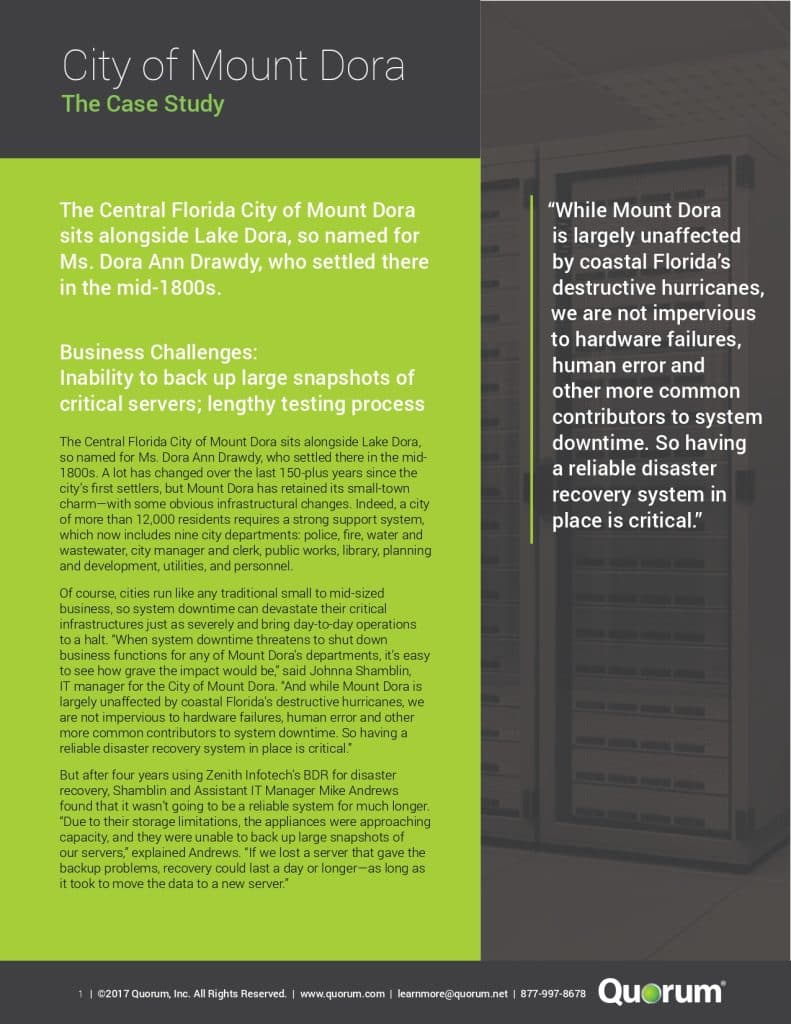
Business Challenges: Inability to back up large snapshots of critical servers; lengthy testing process
The Central Florida City of Mount Dora sits alongside Lake Dora, so named for Ms. Dora Ann Drawdy, who settled there in the mid-
1800s. A lot has changed over the last 150-plus years since the city’s first settlers, but Mount Dora has retained its small-town charm—with some obvious infrastructural changes. Indeed, a city of more than 12,000 residents requires a strong support system, which now includes nine city departments: police, fire, water and wastewater, city manager and clerk, public works, library, planning and development, utilities, and personnel.
Of course, cities run like any traditional small to mid-sized business, so system downtime can devastate their critical infrastructures just as severely and bring day-to-day operations to a halt. “When system downtime threatens to shut down business functions for any of Mount Dora’s departments, it’s easy to see how grave the impact would be,” said Johnna Shamblin, IT manager for the City of Mount Dora. “And while Mount Dora is largely unaffected by coastal Florida’s destructive hurricanes, we are not impervious to hardware failures, human error and other more common contributors to system downtime. So having a reliable disaster recovery system in place is critical.”
But after four years using Zenith Infotech’s BDR for disaster recovery, Shamblin and Assistant IT Manager Mike Andrews found that it wasn’t going to be a reliable system for much longer. “Due to their storage limitations, the appliances were approaching capacity, and they were unable to back up large snapshots of our servers,” explained Andrews. “If we lost a server that gave the backup problems, recovery could last a day or longer—as long as it took to move the data to a new server.”
To boot, testing was a time-intensive process, taking the team a few hours to test just one server. As a result, Shamblin and Andrews were able to test just once or twice a year. With time running out and a Band-Aid solution in place to hold the servers over until a new system could be deployed, Shamblin and Andrews began their search for a new disaster recovery solution.

